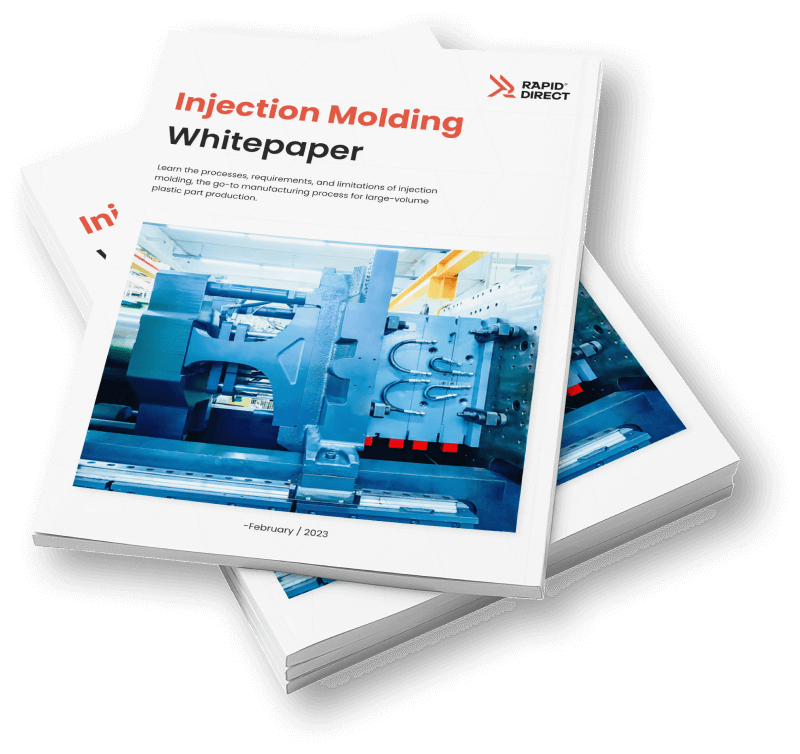CNC machining is the traditional method of making injection molds using materials such as aluminum and steel. It is highly recommended in injection mold design due to its accuracy, precision, and optimal suitability for any mold design. However, it is not an ideal option if you’re on a budget or in a hurry to launch your products.
Introducing 3D printing into injection mold manufacturing has improved part prototyping and manufacturing. For example, it allows designers and manufacturers to work with more complex mold designs using cost-effective materials. Are 3D-printed molds the right choice for your next project? This article talks about everything you need to know about 3D printing molds.
What’s 3D Printed Injection Mold?
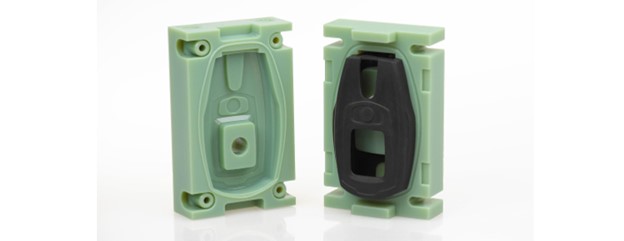
A 3D printed injection mold is made from plastic polymers such as ABS and polyethylene, using one of the different types of 3D printing technologies. Choosing 3D printing technology depends majorly on the mold’s material makeup, properties, and intended mold sophistication. 3D printing plastic mold is a cheap process highly suitable for different designs. Furthermore, manufacturing the mold is faster. Consequently, the overall prototype and part production process that involves injection molding is faster.
Advantages of Using 3D Printed Injection Mold
3D printed molds are important in prototyping and part manufacturing due to their low cost, flexibility, and other advantages. Below are a few reasons you should consider for your project:
They are low-cost
The molds are made using plastics cheaper than metals such as aluminum and steel used by traditional injection molding. Furthermore, unlike CNC machining, 3D printers are less expensive, and the printing process is less time-consuming.
As a result of their low cost, 3D-printed injection molds are the cost-effective option for low-volume production. According to enthusiasts, using one can save about 80% of mold manufacturing costs.
They require less industrial expertise
Anybody with a good knowledge of 3D printing can print an injection mold. Therefore, this negates the need for industrial expertise that increases the labor cost of traditional mold manufacturing processes like CNC machining.
They are suitable for low-volume production
A 3D-printed mold is better for low-volume production than a CNC-machined mold. On the one hand, making them requires a lower initial investment cost than CNC machining. On the other hand, the manufacturing materials (i.e., plastics) are cheap. As a result, mold designers do not have to worry about increasing the number of injection molded parts to cover the cost of production.
The mold design process is easier and more flexible
3D printing allows more dexterity in designing a mold. Thus, mold designers and manufacturers can easily design and make molds. Furthermore, correcting errors after 3D printing a mold is easier due to plastic use.
Disadvantages of Using 3D Printed Injection Mold
Although using a 3D-printed plastic mold has its advantages, there are several situations where you need to go for other types of injection mold toolings due to their disadvantages. Below are a few of its disadvantages:
Shrinkage defects in printed molds
Like any 3D printed part, the molds can undergo several defects, such as warping due to shrinkage during cooling. When the mold itself warps, there can be problems when working with products that require high tolerance.
Issues in structural integrity
Plastic 3D printed molds are less stable than metal molds when subjected to the high temperature and pressure the injection molding process is known for. The weak structural integrity of the molds has several effects, such as degradation of the mold gate and weld line, making them unrealistic for high-volume production.
Experimentation necessitates waste
If you 3D print a mold by yourself, it is normal to waste some plastic materials before you get one that works for you. While 3D printing allows you to adjust the design easily, sometimes, you might not notice some defects until the end leading to more waste. Note: it is possible to recycle the waste.
Considerations Before You Choose 3D-Printed Injection Molds
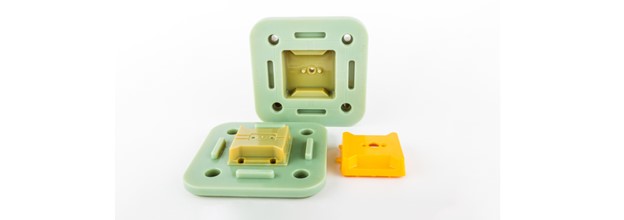
The success of an injection molding process depends on the 3D-printed mold. Consequently, you should consider factors such as the number of prints, draft angle, etc., as highlighted below.
The number of prints
3D-printed injection molds have weaker structural integrity than their metallic counterpart, so they are only suitable for low-volume manufacturing. Generally, most 3D printed molds only apply for 30 to 100 runs, making them the perfect option in rapid prototyping. In contrast, you might need to consider a conventional mold made from aluminum or steel if you want something higher.
Draft angle
The draft angle aids in the proper ejection of the injection molded part on the completion of the process. Therefore, you should ensure that you correctly incorporate the right draft angle during mold designing. A recommended draft angle of 20 can make molded part removal easier.
Size and shape
You should know the size of the injection molded part you want and choose a corresponding size and shape. One of the basic differences between a 3D printed and CNC machined mold is its size. Generally, 3D-printed molds have a smaller size. As a result, this reduces the size of injection molded parts you can work with compared to CNC machined molds.
Smooth finishing
3D printed molds sometimes have lesser surface integrity than metallic injection molds due to the high injection molding temperature that can degrade the mold. Consequently, these molds are not the best options for projects requiring smooth finishing. Instead, it would be best to go for aluminum or steel injection molds.
Another solution is to use a protective coating made from materials such as ceramic on the printed mold to reduce heat degradation and help achieve a smooth finish.
Note: The general 3D printing service cost, material cost, and cost of 3D print technology will affect the choice of 3D printed mold.
Design Tips for 3D Printed Mold for Injection Molding
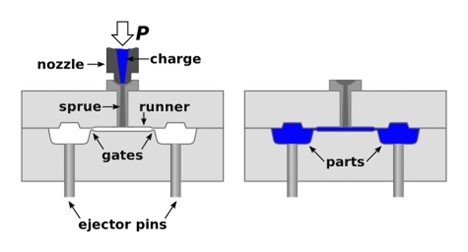
To design a mold using 3D printing, you must consider factors such as materials, parts, injection molding defects, etc. Below are a few tips to help you reduce the challenges surrounding designing a mold using 3D printing.
Materials
Many materials are suitable for making a 3D-printed injection mold, such as PETG, ABS, Nylon, PP, and acetal. Before choosing a material to 3D print plastic mold, consider these two things:
- Strength/Stiffness: The right plastic polymer to 3D print injection mold should be strong and stiff after printing. Strength and stiffness will make the mold withstand the pressure generated during the injection process.
- Temperature resistance: Injection molding occurs at a high temperature to ensure the maximum flow of the molten plastic. As a result, the chosen plastic material for making the mold should have a melting point higher than the injection molding material.
Mold design
Mold design is the basis of mold manufacturing. Here are a few things to consider when looking into the mold design of a 3D-printed mold:
- Inner face orientation: The mold’s inner face should have an orientation that doesn’t allow any support to come in contact. Therefore, the printed parts’ surface quality will increase due to the reduction or total avoidance of support marks. Furthermore, it reduces the need for post-processing.
- Shallow air vent: Incorporating an air vent in the mold design will help expel trapped air during the injection molding process. A recommended shallow air vent of about 0.05mm can help reduce the chances of defects such as injection molding flash.
- Use a channel: Incorporate channels into the mold design for molds that will be used for more than 20 runs. This will allow you to embed metal rods and tubes and reduce defects in injection molded parts such as warping. Furthermore, using a channel will reduce cooling times.
- Layer height: Printing at a lower layer height will improve the smoothness of the printed mold. Besides, it will reduce the visibility of the print lines.
Part design
As with the mold, you can also consider incorporating the design tips listed below into the part you want to make:
- Add a draft angle: A draft angle will make removing the injection molded part from the printed injection mold easy. Depending on the part, a recommended draft angle is 20.
- Uniform thickness: The injection mold part needs a uniform wall thickness across the entirety to reduce defects such as warping during and after injection. However, in cases where the walls should be thin, include thin ribs and gussets to increase the wall strength.
- Avoid sharp corners: Including radii on the mold’s edges and corners, can avoid sharp corners. This will help reduce plastic melt flow and ultimately reduce injection molding flaws.
Eliminate Flash
Flashing is a common defect in injection molding in which molten plastic spills from the mold during injection and solidifies. It occurs due to imperfect mating of the mold halves, high injection pressure, or an overfilled mold.
You can eliminate flashing with a 3D-printed mold by incorporating runner systems into the mold design and ensuring tolerance in the part line. However, if these don’t work, you can try post-design tweaks, such as increasing the clamping force and/or reducing the injection pressure.
Remove part with a release compound
Introduce a release compound during the ejection process to aid in the smooth removal of the injection molded parts. Without a release compound, the part can become stuck in the mold. This will require excessive force to remove the part, which can destroy the part and/or the mold.
3D Printing Molds for Injection Molding
3D printing a mold for injection molding is only achievable by understanding the process and the needed configuration. Below is a summary of the process and the common configuration.
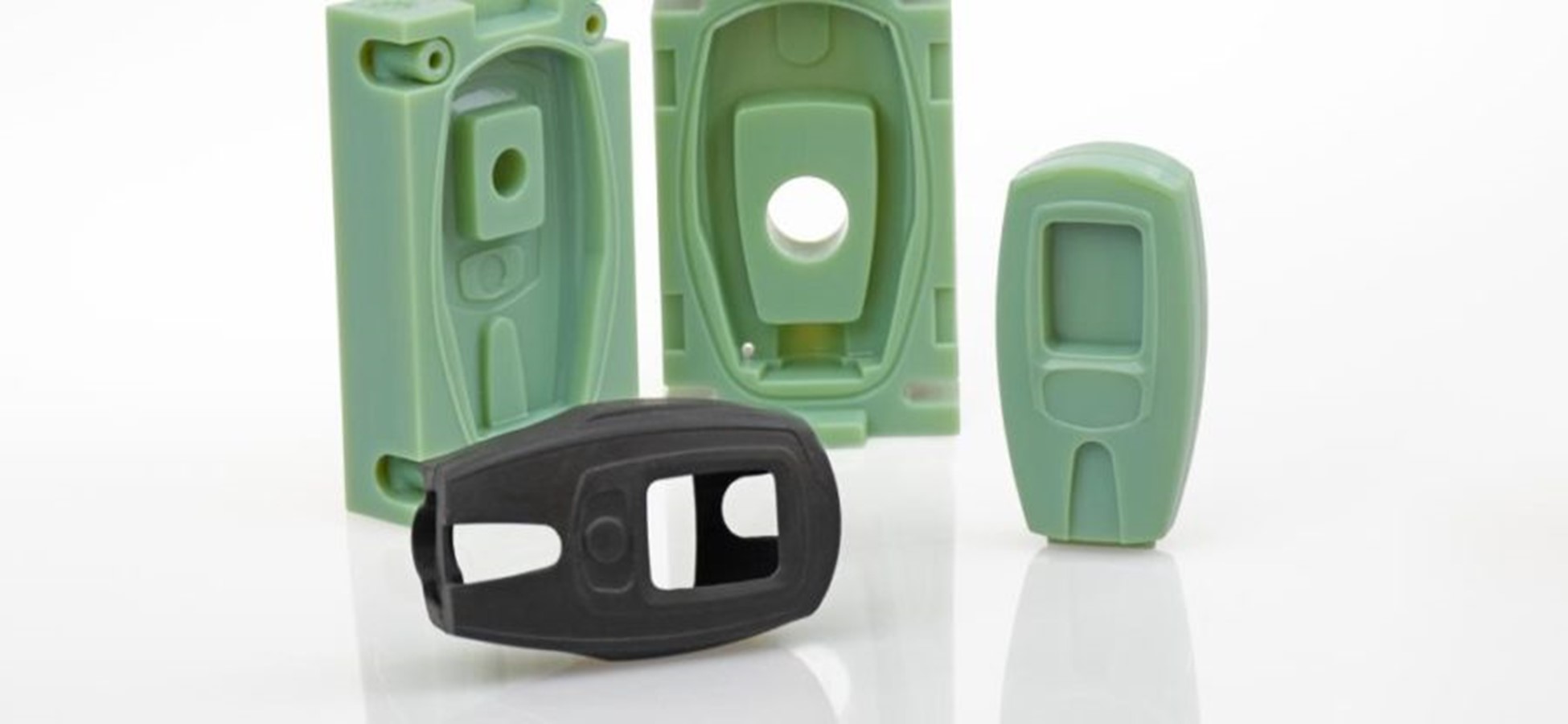
Process
3D printing a mold is different from conventional 3D printing. In conventional 3D printing, the moment the printer stops, you have your part. However, 3D printing a mold has a difference illustrated in the steps below:
- Create the design: Create the mold design using CAD software. Ensure that the mold is designed as an inversion of the final object. Popular software suitable for the process is AutoCAD and Fusion.
- Export design file: Convert the CAD model to the STL file format and slice using slicing software.
- Print the mold: Print the mold using a 3D printer layer by layer.
- Metal Frame: Fit the molds into metallic frames to start the injection. However, this depends on the intended configuration of the mold highlighted below.
Standard Configurations
You can utilize two standard configurations if you want to 3D print mold for injection molding.
- Insert molds into aluminum frames
In this configuration, the printed molds are further inserted into an aluminum frame, providing support and improving their stability and accuracy. As a result, many manufacturers consider them the better configuration for making accurate injection molded parts. Aside from their accuracy and support, the frame prevents molding defects such as warping.
- Fully 3D printing molds
This configuration does not need an aluminum support frame as they are fully printed. Consequently, the molds require more printing material (increasing the print cost and time). However, they are prone to defects such as warping after extensive use due to the lack of frame.
Produce Plastic Parts With 3D Printed Mold
Making a 3D-printed mold is a straightforward process for people with operational expertise and knowledge of 3D printing. However, for people without expertise, a better option is to outsource molded parts production to a professional. At RapidDirect, we offer 3D printing services to help you create prototypes and production parts.
We are an ISO 9001:2015 certified prototype and part manufacturing company with the right technology, machine, facilities, and teams to handle your project effectively. Moreover, our instant quoting platform gives accurate quotations and DFM analysis on design uploads. Upload your design file today and get a real-time quotation and DFM report within 12 hours.
Conclusion
3D printed molds are unlike traditionally designed molds and are applicable in several industries that require low-volume production for simple and complex product designs. This article discussed everything you need to know about a 3D printed mold and how to design one. Do you need high-quality injection molded parts from 3D printing or CNC machining? Let us help you get started.
FAQs
3D printed injection mold tooling differs from aluminum tooling based on the part manufacturing process, cost, and properties. They are made using plastics. Consequently, they are cheaper and weaker than aluminum molds. Furthermore, they are less suitable for a large volume of production.
3D printing is an additive manufacturing process that involves creating a product by making layers according to a CAD model. Injection molding involves making a mold and filling it with molten plastic. On cooling, the plastic solidifies, taking the form of a mold.
3D printed molds are strong. However, they are weaker than molds made from metals such as aluminum and steel. Nevertheless, the printed molds can run 30 to 100 parts depending on your plastic materials.
